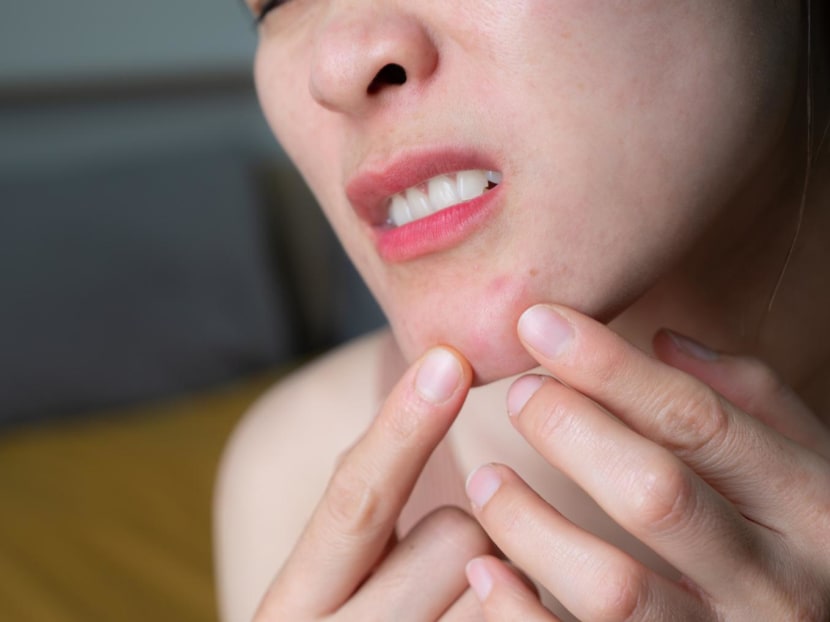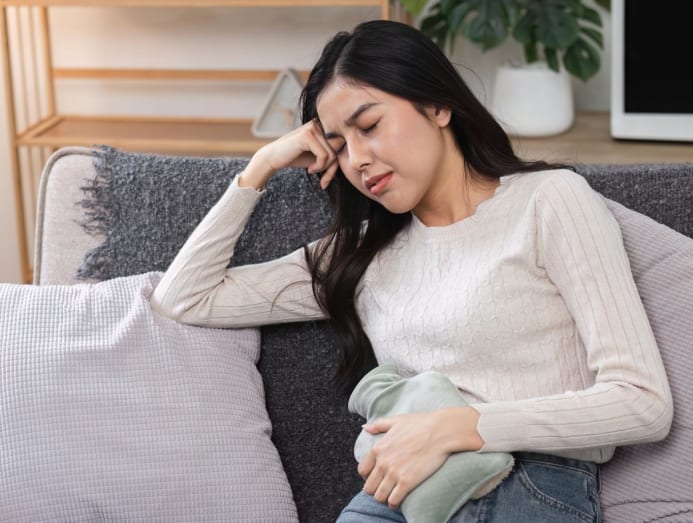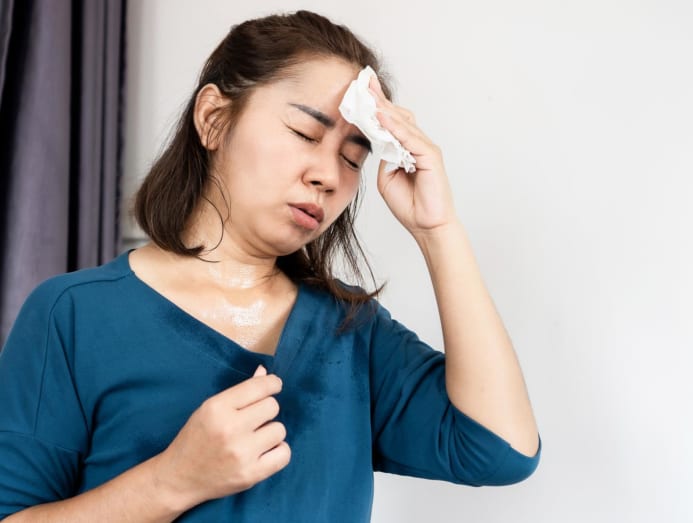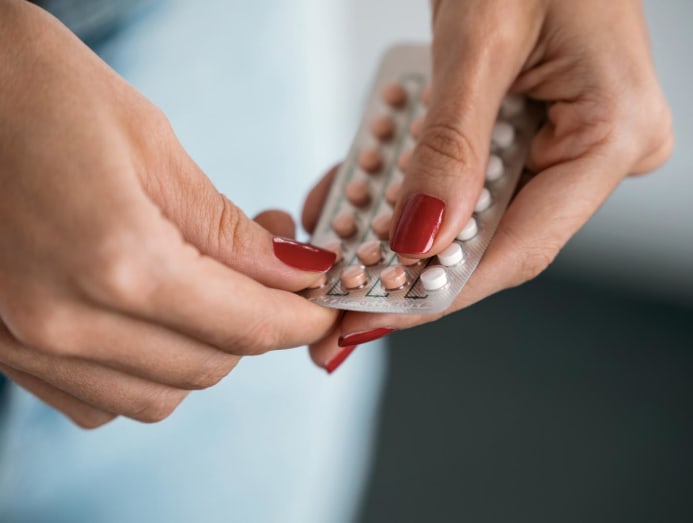What is hormonal acne and why do some women battle it into adulthood?
More women than men are prone to hormonal acne and it is affected by the monthly menstrual cycle, pregnancy and childbirth, and underlying health conditions such as polycystic ovary syndrome. Here’s how to tell the difference between hormonal acne and other breakouts, and what treatments are available.

Hormonal fluctuations, whether due to your menstrual cycle, pregnancy, childbirth, fertility treatments or underlying health conditions, can trigger an acne breakout at any age. (Photo: iStock/Boyloso)

This audio is generated by an AI tool.
Most women would have left their acne woes behind after their teenage years. But for some, acne plagues them deep into adulthood.
Why does this happen? It’s your hormones.
Hormonal fluctuations, whether from your monthly menstrual cycle, physiological changes like pregnancy and childbirth, or underlying health conditions such as polycystic ovary syndrome (PCOS), can trigger an acne breakout at any time.
Dr Lee Hwee Chyen, dermatologist and medical director of Epi Dermatology & Laser Specialist Clinic, said: “Hormonal acne occurs post-puberty and in adulthood, generally from 25 years, and is sometimes referred to as ‘adult-onset acne’.”
This is a subtype of acne exacerbated by fluctuations in hormone levels, such as androgens. While androgens are male sex hormones, such as testosterone, women have them in lower levels than men.
Dr Rachel Ho, an aesthetic doctor at La Clinic, said androgens can increase sebum production, resulting in acne.
Hormonal acne commonly occurs during the menstrual cycle. This is due to the cyclical fluctuations in progesterone and oestrogen, which increases sebum levels in the skin.
Besides your monthly periods, hormonal imbalance can be seen in PCOS, as well as thyroid disorders, congenital adrenal hyperplasia (a genetic condition where the adrenal gland produces too much testosterone) and Cushing’s Syndrome (where the body over-produces cortisol for a prolonged period). All these can worsen acne.

And while clinically, hormonal acne looks the same as teenage acne and can occur on the face, chest and back, both doctors told CNA Women that it tends to appear on the chin area and around the jawline.
In short, “your ‘U-zone’ rather than the T-zone (nose, forehead and chin)”, said Dr Lee.
HORMONAL ACNE VS OTHER TYPES OF ACNE
Acne is a complex condition influenced by a range of factors.
For instance, bacterial acne typically occurs on the forehead, nose and cheeks due to a combination of bacterial overgrowth, inflammation and increased sebum production in the pores and hair follicles.
Fungal acne, on the other hand, is caused by excessive yeast growth in the hair follicles, and often presents as itchy, red bumps. It tends to occur on the arms, chest and back.
It can be confusing to tell the difference between hormonal and stress acne, as both are triggered by hormones.
When the body is stressed, it produces more cortisol and androgen. The elevated levels stimulate sebum production, inflammation and bacterial accumulation, which contributes to acne breakouts, said Dr Lee.
Stress acne can be triggered at any time because of psychological stress, said Dr Ho. Once that stressful period is over, the acne will naturally clear up.

Hormonal acne, however, is cyclical. It worsens during the luteal phase of the menstrual cycle – days 14 to 28, about one week leading up to your menses, said Dr Ho. During this period, elevated testosterone levels lead to increased sebum production, resulting in acne breakouts.
It’s also easy to confuse painful cystic acne with hormonal acne, and the terms are often used interchangeably as many women often experience cystic acne when they have hormonal fluctuations.
Dr Lee explained that cystic acne is “a more severe form of acne and is a complex condition influenced by multiple factors, including hormones, genetics, medications, environmental and lifestyle factors”.
In cystic acne, the inflammation is deeper and more severe, and there is often pus trapped under the skin, said Dr Ho.
IS YOUR HORMONAL ACNE HERE TO STAY?
Yes, to a certain extent.
“Hormonal factors are recognised as one of the triggers for all types of acne,”
said Dr Ho. “So females may struggle with hormonal acne for as long as the contributing hormonal influences persists.”
While both men and women can develop adult-onset acne, women are more prone to it as we experience hormonal fluctuations throughout our adult life: During menstruation, pregnancy or menopause, when using birth control pills, or being on fertility treatments, said Dr Lee.
Conversely, just as our hormones can trigger acne, they can also help resolve the condition spontaneously, as your hormone levels stabilise naturally, added Dr Ho.
Does it mean that if you had bad acne as a teenager, that you will have bad hormonal acne into menopause?
Dr Ho said that while in theory, it might be possible that hormonal acne can occur due to the relative increase in androgens during the teenage and menopause years, there are no studies that make the link between teenage and hormonal acne.
That said, if the cause of acne is due to a condition like PCOS, which was discovered in your teenage years but left untreated, it may persist through adulthood, said Dr Ho.
HORMONAL ACNE: A PRECURSOR TO MENOPAUSE?
While hormonal fluctuations occur regularly, it seems to become more prominent in our late thirties to early forties. In fact, many of my friends have noticed a surge in acne breakouts during this period.

Naturally, it can make one wonder if it’s linked to perimenopause. But Dr Lee said it may not necessarily be so.
She said that while perimenopause and menopause can cause hormonal shifts and thus, make one more prone to acne, there are also other reasons why women in their thirties and forties experience hormonal shifts.
They may simply be more vulnerable to hormonal changes at this stage in their lives, Dr Lee added. Starting fertility treatments or experiencing increased stress at work or at home can lead to hormonal imbalances and result in an onset of acne.
However, if you are in this age group, you’re also likely to experience other perimenopausal symptoms, such as hot flushes, night sweats and mood swings, in addition to acne breakouts.
The reason for hormonal acne during this time is because oestrogen levels decline while androgen levels increase, resulting in an increase in sebum in the skin, said Dr Ho.
“Some studies have also demonstrated a change in skin microbiome during perimenopause, which can contribute to acne as well,” she added.
The studies found that oestrogen decline in perimenopause led to an increase in the diversity of bacteria in the skin. For some women, this disequilibrium creates an environment favourable for acne to thrive in, Dr Ho told CNA Women.
ADDRESSING HORMONAL ACNE WOES
Regardless of the underlying cause, when combating acne, the aim should be preventing clogged pores, managing oil control, and reducing inflammation and bacteria growth, said Dr Lee.
At the doctor’s office, procedures like medical-grade facials and chemical peels can help exfoliate the skin and improve texture, while medical-grade lasers and light treatments, such as Q-switched (high-intensity pulses of light energy) or IPL (broad band light energy), can help reduce sebaceous gland size and sebum production, reduce inflammation and clogging of pores.

For home maintenance, opt for skincare that contains active ingredients such as benzoyl peroxide and azelaic acid for its antibacterial and anti-inflammatory properties, salicylic acid to exfoliate dead skin and unclog pores, as well as retinols, retinoids and vitamin A to regulate oil production and promote new skin cell growth.
Doctors may also recommend medication to regulate your hormones. Said Dr Lee: “Birth control pills can help balance hormones and improve acne control, while androgen blockers, like spironolactone, can help reduce androgen levels, decreasing oil production and reducing breakouts.”
Interestingly, spironolactone for acne is considered an off-label use, said Dr Ho. It is usually taken to lower blood pressure and reduce the risk of stroke and heart attack. Spironolactone can be an alternative solution for women who find topical treatments insufficient and yet do not want to go on oral contraceptives, she added.
For perimenopausal women, hormone replacement therapy (now called menopausal hormone therapy) can be offered to help balance the effects of falling oestrogen levels and the relative increase in androgen levels, said both doctors.
So, while hormones may be the biggest underlying cause of your acne breakouts, you don’t have to go through your entire life battling it. With the right treatments and medical prescriptions, where necessary, it can be managed.
CNA Women is a section on CNA Lifestyle that seeks to inform, empower and inspire the modern woman. If you have women-related news, issues and ideas to share with us, email CNAWomen [at] mediacorp.com.sg (CNAWomen[at]mediacorp[dot]com[dot]sg).










